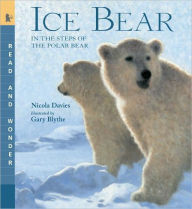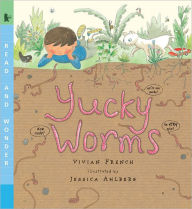The Arctic might be a bit too chilly for humans to live there, but it is the perfect home for polar bears. But the earth is getting warmer and the ice is melting. Where will the polar bears live? How can we help protect their home?
This is a Stage 2 Let's-Read-and-Find-Out, which means the book explores more challenging concepts for children in the primary grades. Let's-Read-And-Find-Out is the winner of the American Association for the Advancement of Science/Subaru Science Books & Films Prize for Outstanding Science Series.
Supports the Common Core Learning Standards and Next Generation Science Standards
Children's Literature - Sharon Oliver
Part of the "Let's Read and Find Out Science" series, this volume on polar bears is an appealing and informative book for beginning readers. It opens with a mother bear's nose sticking out of her winter den, and she is soon followed out onto the snowy ground by her new cub, exploring his world for the first time. Brief information is given about the cub's growth and the hibernation cycle of the polar bear. The mother and cub then go hunting for seals, while the text explains the food chain of the Arctic Circle. A few pages are dedicated to the bears' shrinking habitat. The cub is then described as an adult of such size that "his head would brush the ceiling of your living room," and the author speculates as to whether he may be the last polar bear if the ice continues to shrink. At the end, readers are provided with a page encouraging them to find out more about global climate change and what they can do to make a difference. Short sentences with good context clues produce a highly readable text. Watercolor illustrations in frosty shades are an excellent accompaniment to the text. The wildly cute cub (who displays his antics on the end papers) and our "narrator," a white-coated bespectacled polar bear, are particularly appealing. This is an excellent addition for all children's libraries. Reviewer: Sharon Oliver
School Library Journal
Gr 1–4—This beginning science book opens with fascinating facts about baby polar bears that will capture readers' attention. Moving from discussion of the cubs to more challenging information about climate change and how it affects the animal's diet is a clever way to organize this fact-filled book. A page entitled "Why the World Is Getting Warmer" and another called "What Can You Do?" are appended. Charming illustrations done in frosty shades enhance the text. Most of the vocabulary is easy to interpret in context, and Thomson uses interesting comparisons, such as if a grown polar bear "stood on his hind legs, his head would brush the ceiling of your living room." Well-written text and appealing illustrations make this title a solid addition to natural-history collections.—Rachel Artley, Watertown Elementary School, TN
Read More















